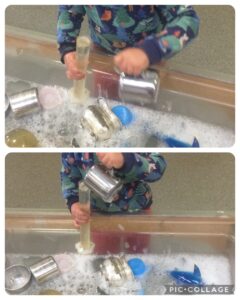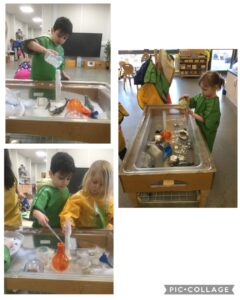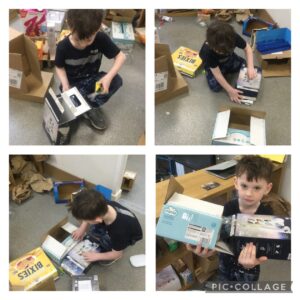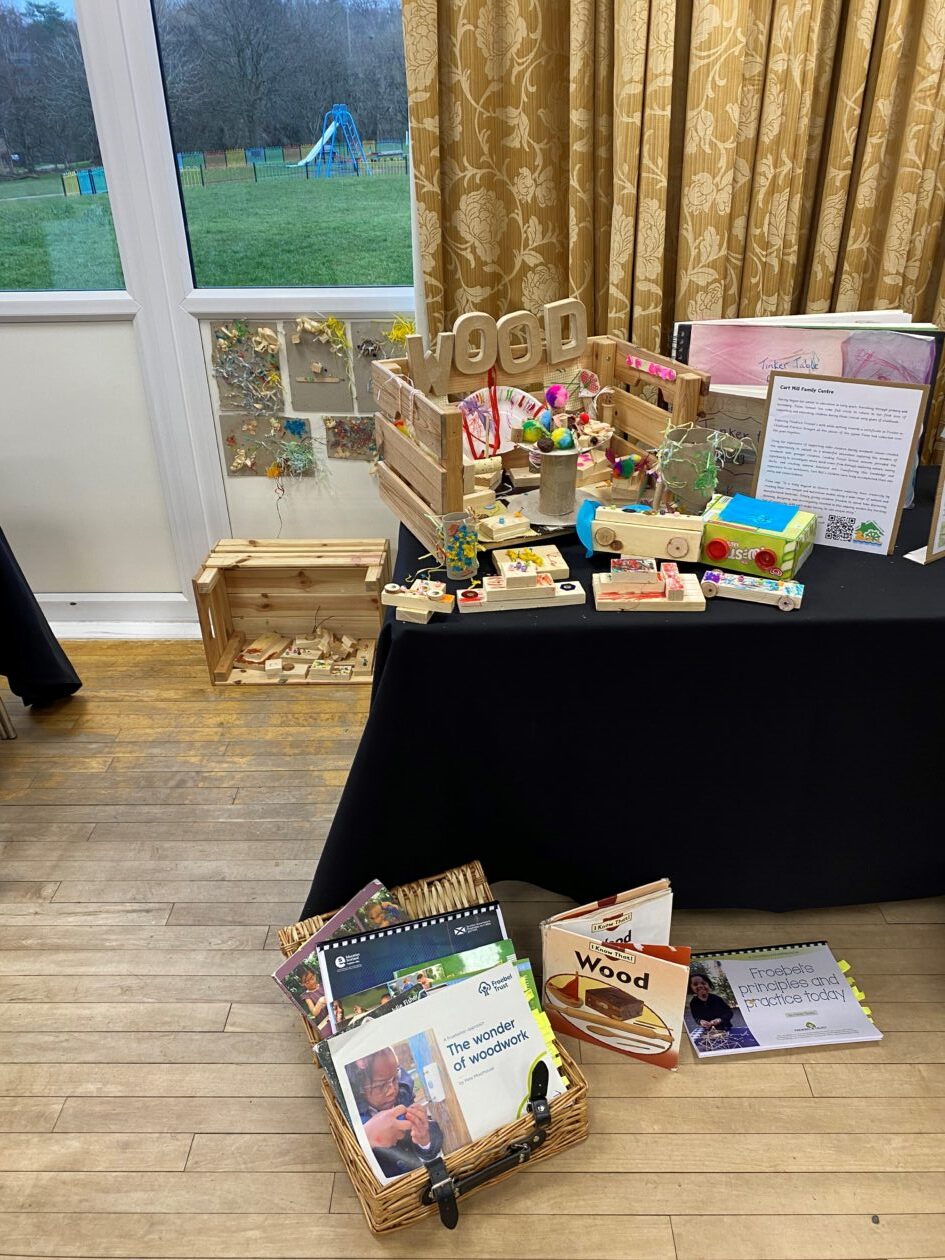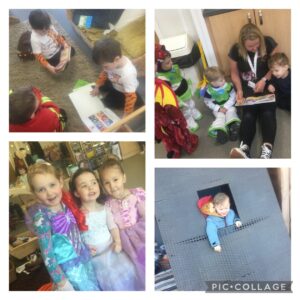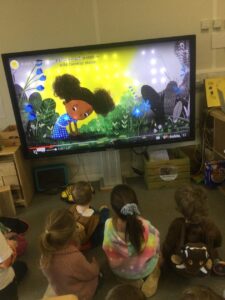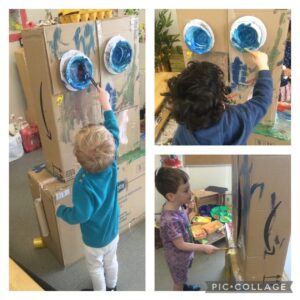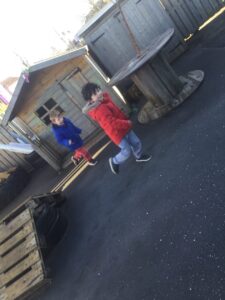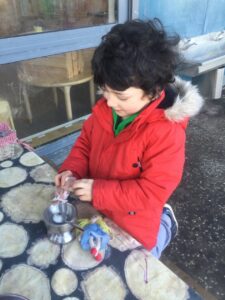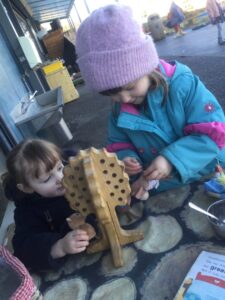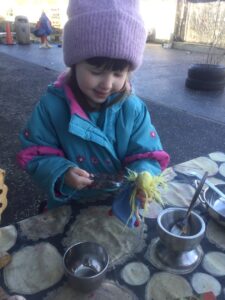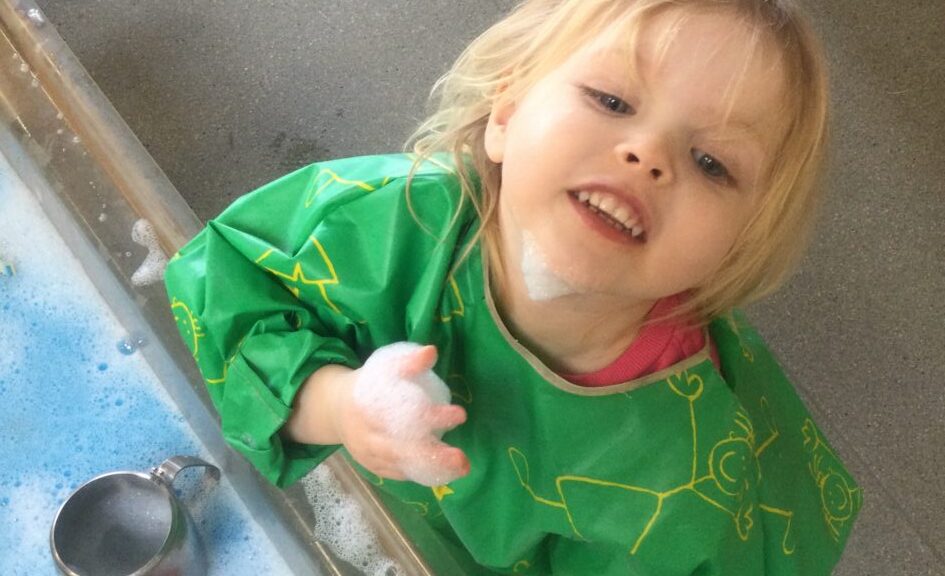The children felt that today would be a good day to try out the thermal camera. A camera that detects heat emitted by objects converting it into an electrical signal , the signal is then used to produce the thermal image on the camera.

We made some ice the night before and tested our camera on it.
The children noticed that the ice was a purple colour through the camera. We filled a cup with warm water to see to see if it looked a different colour through the camera it was bright yellow. A quickly realised that the difference in colour was because the water was warm and the cubes cold. The children decided to try putting one hand in icy water to see what colour there hands would appear through the camera they looked purple because the ice had turned them cold. We looked at each other through the cameras we looked yellow E new this is because we are warm. Next the children looked at the temperature of the ice A noticed the warm water was 20.4 degrees Celsius and the ice measured -8.4 degrees Celsius. That’s very cold as cold as snow commented A.

Some of the children decided to see what would happen to the temperature if we used the thermal camera outside. A thought we should jump in puddles and take a before and after temperature reading to see if the puddle warmed up with us jumping in it. There wasn’t any change in the reading so T decided we should add some ice to see what happens. After adding ice the ice melted a bit and the children seen through the camera that the puddle had turned much colder.

As it was raining today some children wanted to do the cloud in a jar experiment. We filled a beaker with water, added a layer of foam and then used pipettes to drop blue colouring into the foam. I explained that when the cloud gets too heavy the drops fall from them like rain. We discussed that when water droplets get heavy in the sky, gravity pulls them down into the atmosphere.
Maybe you could try this experiment at home with different colours and let us know your findings!
Article 29- I have the right to an education




